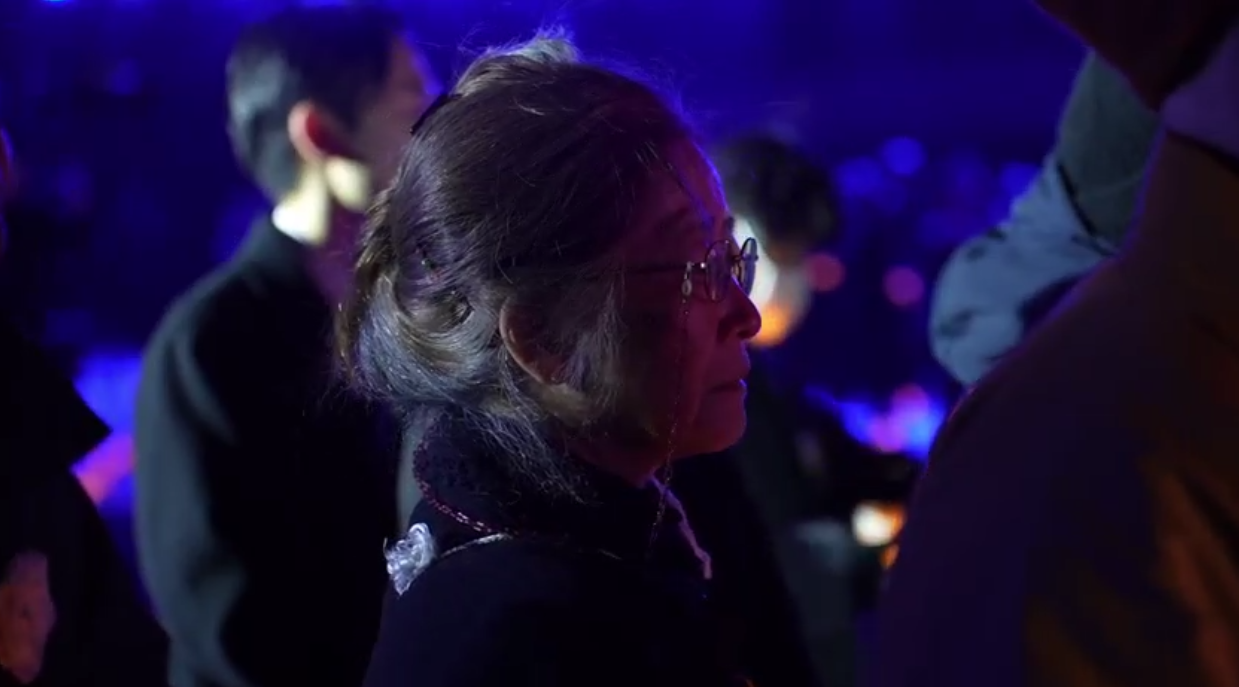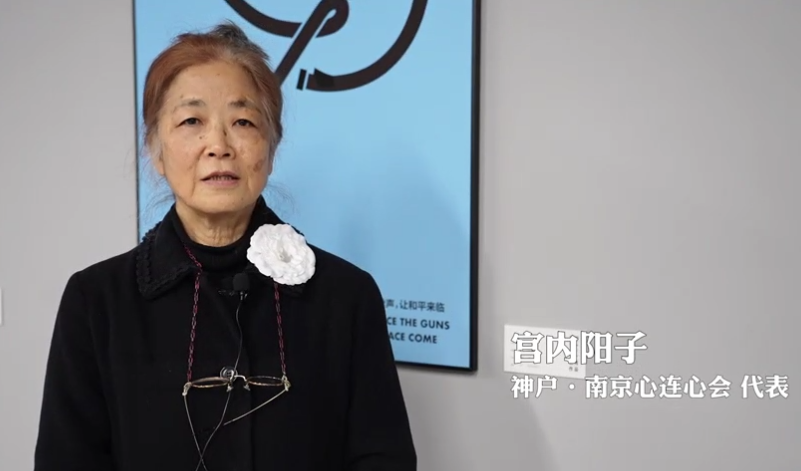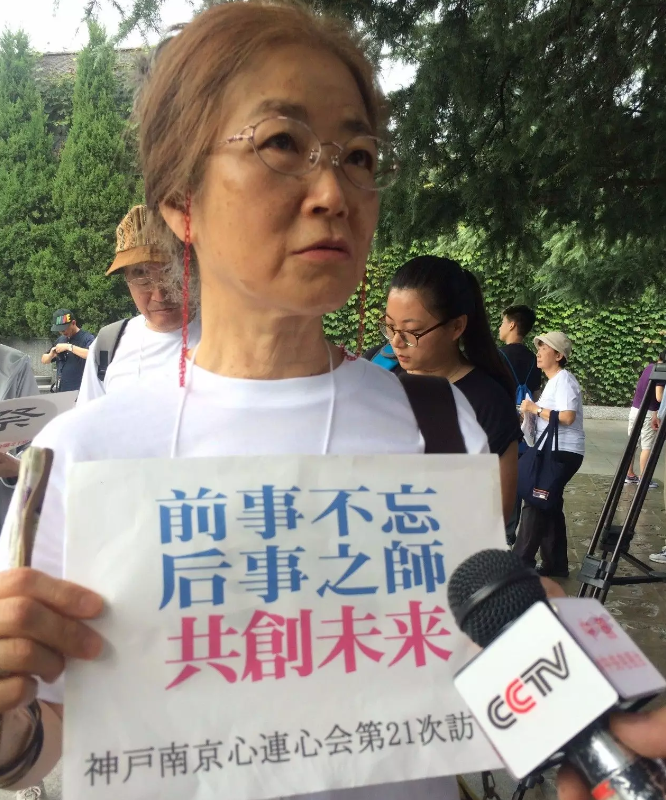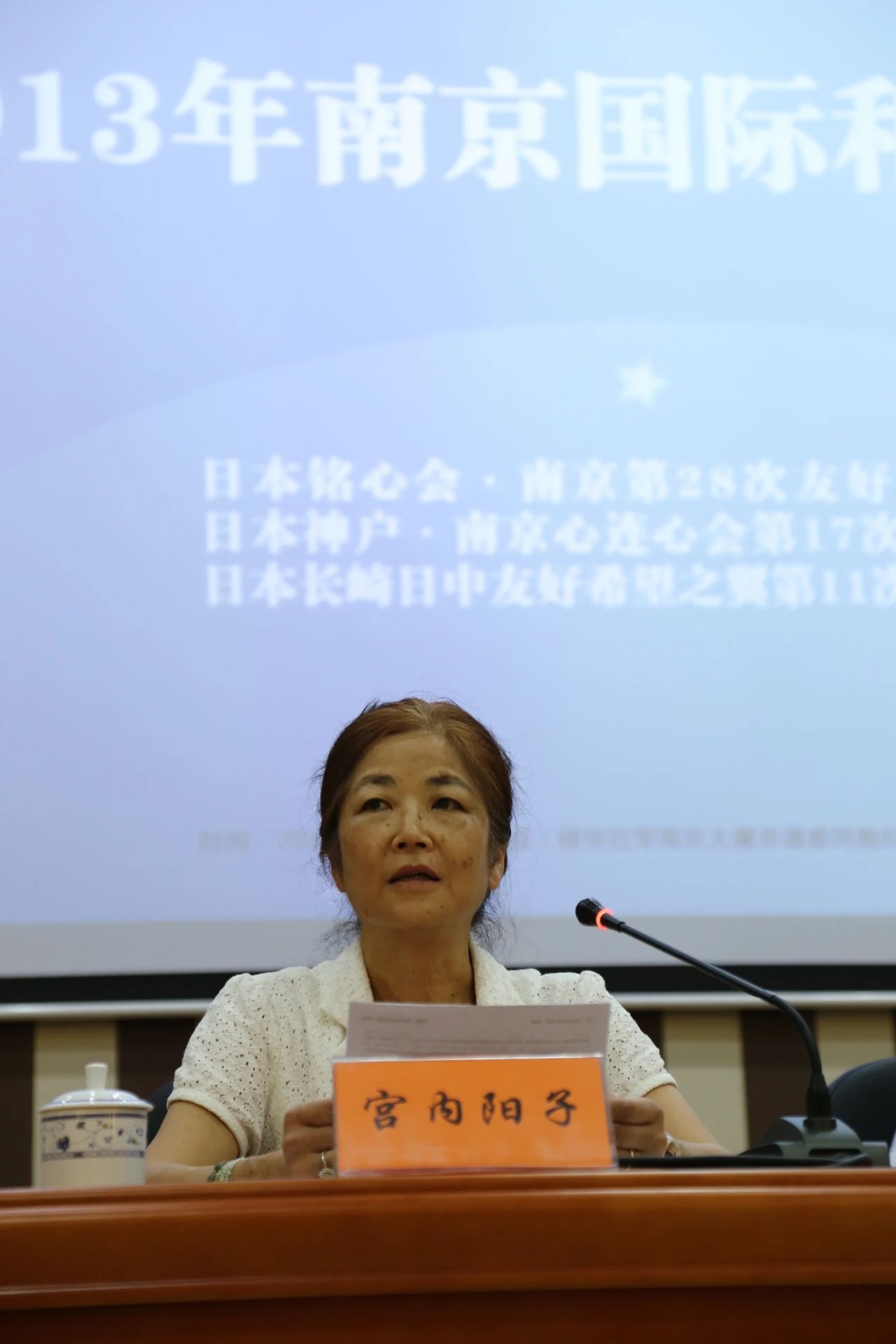"Nanjing Massacre: What Does It Have to Do with Me" Series (14) | She Devoted Herself to Spreading the History of the Nanjing Massacre in Japan for 53 Years
This year, during the National Memorial Ceremony for Nanjing Massacre Victims and the Candlelight Vigil · International Peace Assembly, a Japanese grandmother wearing glasses stood silently. She is the leader of the “Kobe-Nanjing Heart-to-Heart Association” in Japan. In 1971, at the age of 21, she visited China for the first time. Now in her seventies, she reflects on a lifetime of commitment. Before retiring, she was a history teacher in Japan. Throughout her 34 years of teaching, she insisted on educating her students about Japan’s history of aggression. She hopes that her students can sincerely apologize to the Chinese people. The series “Nanjing Massacre: what does it have to do with me” presents its fourteenth installment today She devoted herself to spreading the history of the Nanjing Massacre in Japan for 53 years.

She taught her students about Japan’s history of aggression
Her name is Miyauchi Yoko, born in 1950 in Tokyo, Japan, and raised in Kobe. While studying at a university in Tokyo, she majored in Chinese history, and it was during that time that she began to gradually understand the historical facts of Japan’s wars of aggression. In 1971, as a student, she visited China for the first time with a group, marking the beginning of her connection with Nanjing. In Nanjing, she listened to reports from survivors and learned about the Nanjing Massacre, which had a profound impact on her. After graduating from university, Miyauchi Yoko became a history teacher at a private school in Japan. Over her 34 years of teaching, she noted, “In Japanese textbooks, there is only a brief mention of the horrific events of the Nanjing Massacre and other atrocities during Japan’s war of aggression against China. So I first taught my students to read Journey to China by Katsuichi Honda (a journalist from the Asahi Shimbun), and then write their reflections. The children are truly shocked after reading it.”
Nearly 30 visits to China
The “Kobe-Nanjing Heart-to-Heart Association” was established in 1997, coinciding with the 60th anniversary of the Nanjing Massacre. “At first, we had not formed an organization. Initially, under the leadership of Secretary-General Yuichi Hida, we planned to hold a painting exhibition on the theme of the Nanjing Massacre by Chinese-American painters living in New York across Japan. To this end, we formed an executive committee. In 1996, we rented a venue in Kobe City to hold the exhibition, which showcased not only the works of Chinese-American artists from New York but also paintings by the couple Maruki Iri and Maruki Toshi, centered on the theme of the Nanjing Massacre,” recalled Miyauchi Yoko. Many people attended the exhibition, which generated a significant impact. At that time, none of the members of the executive committee had visited to Nanjing. They then organized a delegation to visit China, and Miyauchi Yoko participated in this delegation. An overseas Chinese gave the group a Chinese name: “Kobe-Nanjing Heart-to-Heart Association.” According to Miyauchi Yoko’s recollection, during that visit, the group of about 30 people attended an international seminar held at the Zhuangyuan Tower in Nanjing and also visited the Dongjiao Burial Site at the eastern suburbs of the foot of Zijin Mountain and Yanzi Cliff. “We saw many monuments, participated in field investigations, and watched the film Don’t cry,Nanking that deeply shocked me.”

The original plan was to organize a single delegation to visit China. However, after this on-site visit, the members of the delegation expressed their desire to come again. As a result, there were second, third, and fourth visits—and now, there have been nearly 30 visits.
The power of persistence
Miyauchi Yoko said that over the years, the “Kobe-Nanjing Heart-to-Heart Association” has encountered several difficulties, particularly regarding funding. “It costed about 200,000 yen per person. It was manageable when I was working, but after retirement, it has become very difficult to come up with that amount. I had to budget carefully every month to save money and find ways to gather those 200,000 yen.” Due to this, Miyauchi Yoko rarely traveled with her family. As the secretary-general of the organization, Yuichi Hida raised funds through donations to keep the organization running. In addition to financial challenges, Miyauchi Yoko also faced resistance from colleagues, students, and parents in Japan when teaching this history to students. “Starting from the last ten years before my retirement, historical revisionism in Japan and rhetoric denying the Nanjing Massacre have become increasingly strong. Some colleagues held such views, and there were strong criticisms among students as well. Some parents even directly asked the principal that ‘please do not teach such classes’, so the principal advised me to ‘think carefully about it.’” Miyauchi countered, “I taught this class for the sake of peace.” She believed that just as students went on study trips to Hiroshima to learn about the atomic bombing, they should also learn about what Japan did in China and other Asian countries. “When Chinese people respond by saying, ‘Do you know what Japan has done?’ or ‘The atomic bomb was also self-inflicted,’ our students should be able to sincerely say ‘I’m sorry’ to them, so that we can engage in equal dialogue.” Miyauchi Yoko also believed that if we truly wanted to transcend national boundaries in the pursuit of peace, we should nurture such children. She argued with the principal, who eventually understood. Therefore, she continued to teach this history class to students until her retirement. Miyauchi Yoko also mentioned that the voices of the victims and the citizens she heard during her visit to Nanjing were important factors that support her to keep going. “If I give up, I won’t be able to convey their thoughts. Just thinking about this gives me the courage to persist.”
Peace assembly organized in Japan
Since 2010, Miyauchi Yoko has served as the leader of the “Kobe-Nanjing Heart-to-Heart Association”. Since then, she has worked diligently to produce materials such as collections of data and reports.、

On August 15, 2013, the Japanese “Kobe-Nanjing Heart-to-Heart Association” made its 17th visit to China. The leader, Miyauchi Yoko, spoke at the peace assembly.

On August 15, 2016, the Japanese “Kobe-Nanjing Heart-to-Heart Association" made its 20th visit to China. They visited the memorial and participated in the Nanjing International Peace Assembly. Miyauchi Yoko laid flowers in front of the Golden Camellia Girl statue at the Peace Park.

On August 15, 2017, the Japanese “Kobe-Nanjing Heart-to-Heart Association” made its 21st visit to China, participating in the Nanjing International Peace Assembly held at the Mourning Square of the Memorial Hall. The leader, Miyauchi Yoko, stated, “The Nanjing Massacre was the most representative event of the Japanese invasion of China. It pains me deeply. In Japan, we face immense pressure, but every time we visit China and the Memorial Hall, we regain courage.”
In addition to participating in the International Peace Assembly in Nanjing, the association also held peace assembly activities across various locations in Japan. “We created a report collection every time to ensure that as many people as possible can read it. These reports included the annual schedule, stories of survivors, reflections from our members, my records, and photographs,” said Miyauchi Yoko. To provide Japanese readers with an immersive experience, she included detailed accounts in her reports, which was also a very important work of the organization.
“We invited researchers and other relevant personnel to study the Nanjing Massacre and Japan’s aggressive wars.” Miyauchi Yoko also traveled to many places in Japan to participate in training sessions for teachers and share the experiences of the association’s visits to China. Since her first visit to China in 1971, it has been 53 years. Miyauchi stated, “I saw the audio picture book The Stamp: Nanjing 1937 published by the Memorial Hall, which introduced the Nanjing Massacre with brief texts, and you could listen to the audio by scanning a QR code with your phone. It would be great if it could be translated into Japanese and published in Japan, allowing readers to learn the history of the Nanjing Massacre in this way. I believed this way could potentially become a new strategy for promoting awareness of the Nanjing Massacre in Japan in the future.”

